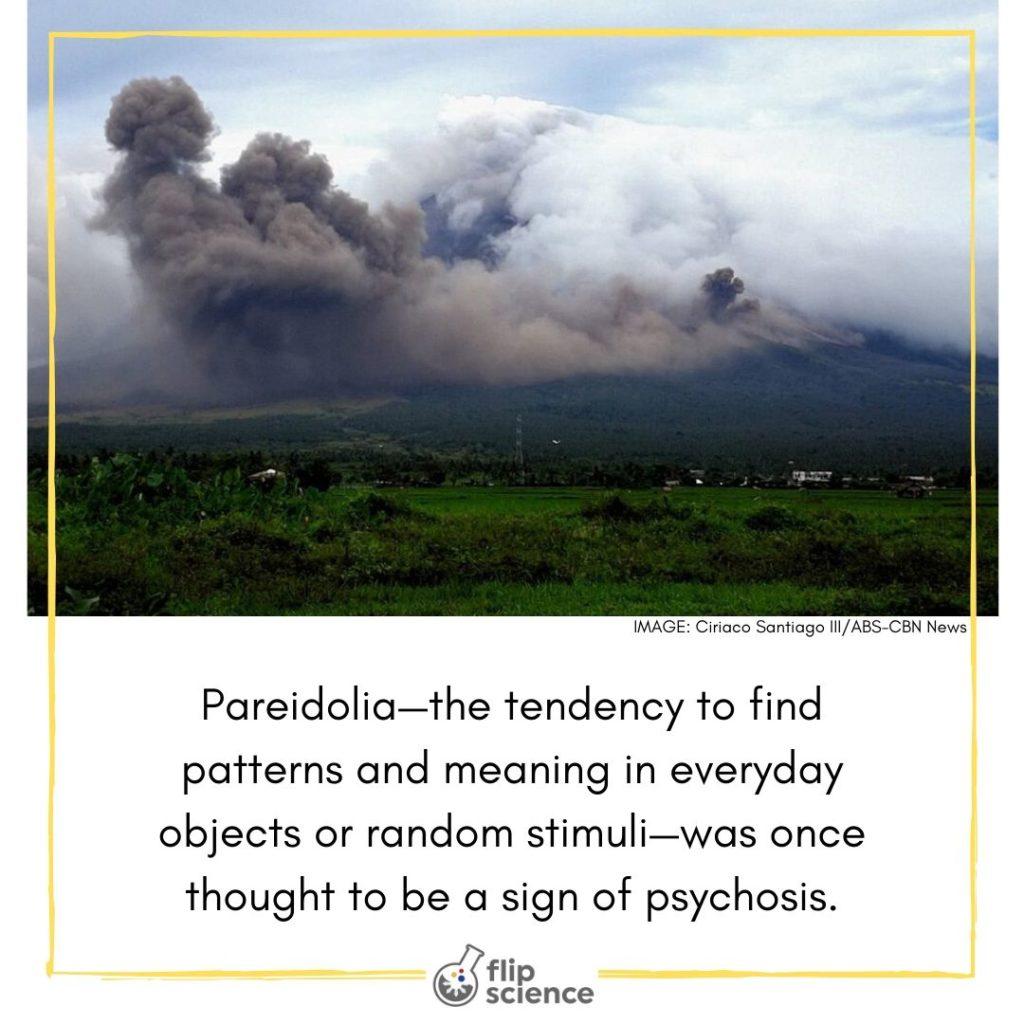FlipFact of the Day: Leonardo da Vinci saw it as a source of artistic inspiration; Hermann Rorschach wanted to use it to diagnose schizophrenia. The tendency to see meaningful or familiar patterns and sounds in vague stimuli or random noise is pareidolia, and it’s something that almost always takes the spotlight in times of calamity.
Once believed to be an indicator of psychosis, pareidolia—which comes from the Greek words para (“beside” or “beyond”) and eidolon (“form” or “image”)—is now seen as a manifestation of survival instincts we inherited from our prehistoric ancestors. In fact, some point to it as a sign that the fusiform gyrus or temporo-occipital gyrus, the part of the brain associated with processing visual information and pattern recognition, is in good shape.
But why do we see faces in unexpected places? According to experts, our knack for sensing such patterns comes from the brain’s organization: It’s built to find patterns, make connections, and process large chunks of data quickly. Thus, when a person sees something that looks somewhat like a face, the brain sifts through everything in its mental database, finds the best possible match, and fills in the rest of the details. This strengthens the visual association between what the person is actually seeing and what the brain thinks they’re seeing.
That’s why sometimes, all it takes is two dots side by side above a horizontal line—kind of like what you’d see on the front end of a car, for example—to find a face.
Take note, though: It’s one thing to see patterns in everyday objects, and another thing entirely to attach meaning to them. Researchers from Finland found that people with strong religious or supernatural beliefs are more likely to find faces in objects and scenery.
While it’s understandable to look at smoke from a volcano and see humanoid figures (such as in the photo of Mayon Volcano above, taken in 2018), it’s important to know the difference between finding meaning and creating it.
Otherwise, we might end up looking for answers in places where they can’t really be found—or worse, feeding our fears with monsters of our own making.
Still remember your 5th-grade science classes? Test your knowledge and see if you still remember these facts and fundamental concepts in human anatomy, biology, botany, and other branches of science. Click here to try the “Are You Smarter Than A Pinoy Fifth-Grader” Challenge.
Follow the hashtag #FlipFacts on Facebook and Instagram to get your daily dose of science trivia!
References
- https://www.livescience.com/25448-pareidolia.html
- https://www.bbc.com/future/article/20140730-why-do-we-see-faces-in-objects
- https://www.inverse.com/article/49527-what-is-pareidolia
- https://qz.com/emails/quartz-obsession/1429831/
- https://news.abs-cbn.com/life/01/18/18/photo-of-mayon-volcano-sparks-romance-in-social-media-users-hearts
Author: Mikael Angelo Francisco
Bitten by the science writing bug, Mikael has years of writing and editorial experience under his belt. As the editor-in-chief of FlipScience, Mikael has sworn to help make science more fun and interesting for geeky readers and casual audiences alike.







